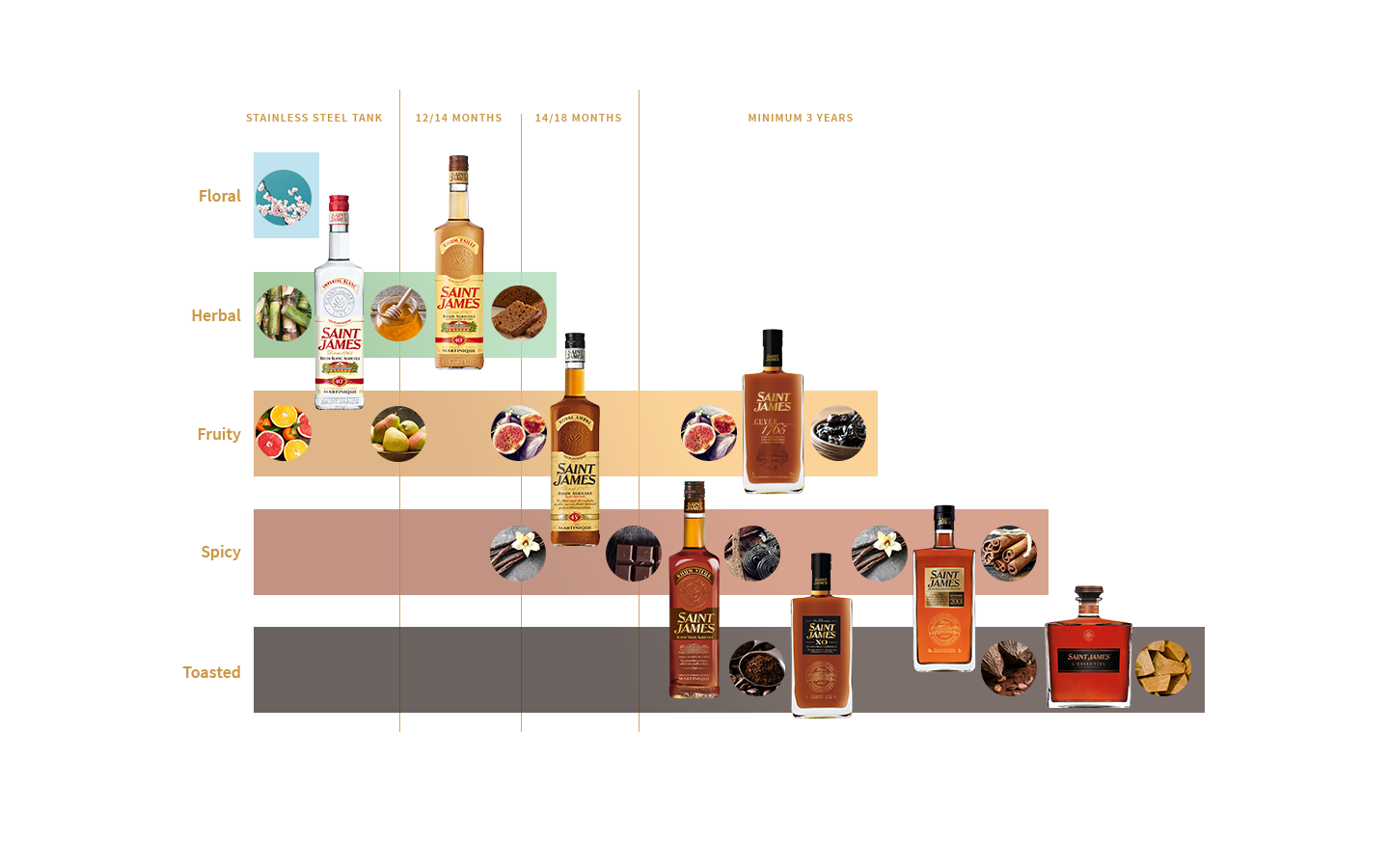TASTING IS A VERY SPECIAL MOMENT
« Tasting is a special time when epicureanism can reach new heights. Anyone can enjoy this rather magical experience if they are ready to take their time and try their hand at this art, following the different stages with their senses alert and a spirit of discovery. It is not very complicated and tasting agricole rum is right at the top level of the method. »
Marc Sassier, œnologist and production
manager at Rhums SAINT JAMES
manager at Rhums SAINT JAMES
WHICH GLASS SHOULD YOU USE?
I recommend using a “tulip” glass,
the body of which narrows towards the top, maximising the intensity of the aromas. Digestif glasses can also be used
as long as their shape concentrates the aromas.
the body of which narrows towards the top, maximising the intensity of the aromas. Digestif glasses can also be used
as long as their shape concentrates the aromas.
APPEARANCE
The colour ranging from light to dark tells you about the age of the rum. You can also watch how it behaves in the glass, which reveals its fluidity.
“A good rum is not cloudy. Its colour ranges from colourless for white rums to shades from straw to amber if stored for a short period in large oak barrels, through to varying shades of mahogany and dark brown depending on the length of ageing in casks.”

THE
NOSE
The nose gives the aromatic characteristics of the rum.
First smell without swirling the glass to discover the primary aromas.
Then swirl the rum to release the secondary aromas. At the last moment tip the glass and smell the top of the glass, as the aromas express themselves via the shortest route.
The nose will therefore capture the most aromas at the top.
First smell without swirling the glass to discover the primary aromas.
Then swirl the rum to release the secondary aromas. At the last moment tip the glass and smell the top of the glass, as the aromas express themselves via the shortest route.
The nose will therefore capture the most aromas at the top.
“To discover all the aromas, wait a few minutes between the two phases to avoid saturating your sense of smell. Vigorously swirling before the second stage extracts as much alcohol as possible leaving only the aromas, as they are less volatile and heavier than the alcohol.”
THE
PALATE
Discovery on the palate takes place in three phases:
- The first impression is called the “attack”. This is when you notice the rum’s texture and balance.
- Then the flavours and character of the rum come through on the palate.
- Lastly, the flavours and sensations which remain in the mouth and the aromas lingering in the soft palate form the “finish”.
- The first impression is called the “attack”. This is when you notice the rum’s texture and balance.
- Then the flavours and character of the rum come through on the palate.
- Lastly, the flavours and sensations which remain in the mouth and the aromas lingering in the soft palate form the “finish”.
“If the taste of alcohol is too strong, add a few drops of mineral water.”
STORAGE TIPS
We recommend storing your SAINT JAMES rum standing vertically away from the air and light.
Laying the bottle horizontally is not advised. Rum does not need to age like a wine and if the bottle has a cork, the alcohol can break down the cork constituents, making it brittle. This may lead to the precious liquid leaking out.
Laying the bottle horizontally is not advised. Rum does not need to age like a wine and if the bottle has a cork, the alcohol can break down the cork constituents, making it brittle. This may lead to the precious liquid leaking out.
As alcohol tends to absorb odours, avoid storing bottles near to strong-smelling substances.








